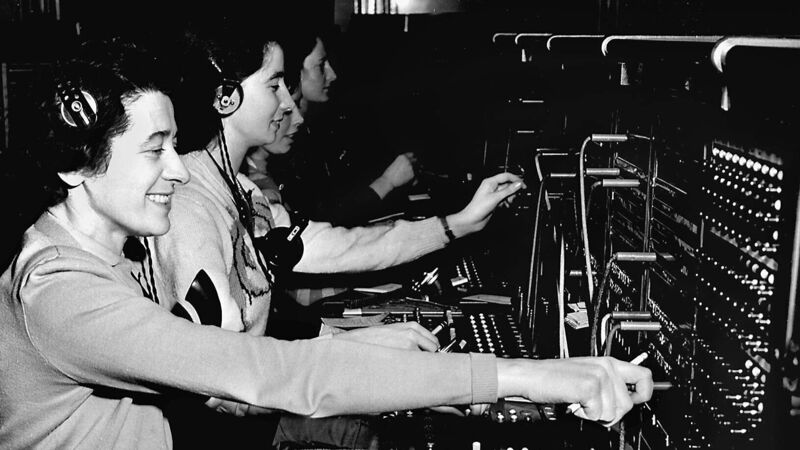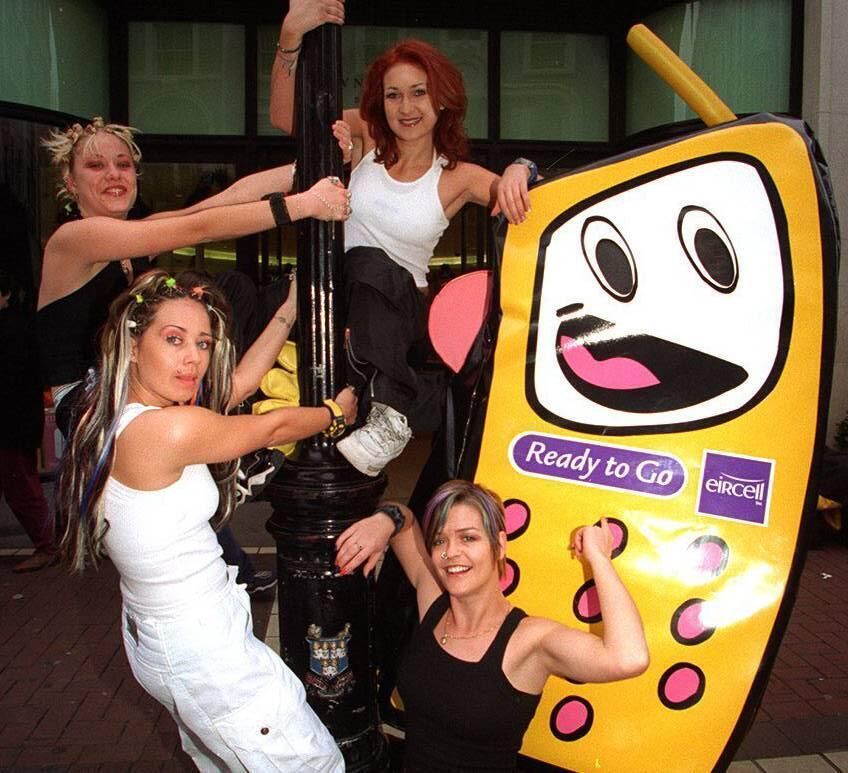Book Review: Irish telecoms, from switchboards to smartphones

- Connecting a Nation: The Story of Telecommunications in Ireland
- Deryck Fay
- UCD Press, €30
IN every village, town and city street in Ireland, almost every second person will have their head down in a smartphone; those same streets are bursting with shops selling mobile devices and we are inundated with advertising selling unlimited broadband deals – whether it is fixed or wireless or even a combination of both.
Ireland’s software industry generating exports of €50bn includes nine of the world’s top tech firms while a necklace of data centres silently clustered around Dublin stores and processes vast amounts of information. Even more anonymous are the 17 subsea cables stretching out from our shores carrying text messages, phones calls and internet data in and out of the country.
According to the author of Connecting a Nation: ‘We are awash, some might say, swimming in modern telecommunications.’ Deryck Fay writes that he is old enough to remember when ‘Ireland was a largely agrarian society with a two-year waiting list just to get a landline phone installed’.
He ponders on how we got from that old-world society to this modern, super-connected one and he has delivered this account of not just a history of the engineering and the technology but a brilliantly researched -- and therefore detailed account -- of the development of Irish society and an emerging nation post-independence.
Ireland’s information age began in the middle of the 19th century, 170 years ago when two cable ships set sail from Wales to lay a telegraph cable to Howth in Co Dublin, the very first cable link to Ireland with the rest of the world; as part of the United Kingdom, this would allow Dublin Castle to receive commands from the Home Office in London or a linen mill in Belfast to accept orders from a merchant in England.
With a line connecting Howth to central Dublin and another, longer line from Holyhead to London a 15-word telegram could be flashed from London to Dublin in a minute, faster than any mode of transport. In 2011, a fibre-optic cable laid between Dublin and Holyhead had a capacity of 1,440 terabytes per second (Tbps) – 863,000,000,000,000 times greater than the cable laid in 1852.
The press coverage of the exciting event in Howth refers to the coming of the ‘electric telegraph’. This was a time of huge societal development as the industrial age roared on with mechanisation and when investors began to dabble in new businesses and the stock market, this created a huge demand for communications – from up-to-date price of shares to the latest information to fill pages of newspapers.
In fact, newspaper proprietors realised that readers would pay for timely information and quickly became a key market for the telegraph industry to deliver the hottest political intrigue and up-to-the-minute share prices – perhaps not too unlike the modern social phenomenon of FOMO (fear of missing out).
The telegraph soon spread throughout the country but the next big leap in communications would put Kerry as the communications hub of the world with a cable laid between Newfoundland and Ireland – a distance of 3,122km.
The harbour at Valentia was selected to be the eastern terminus of the transatlantic cable and this corner of Kerry came to be known as the ‘next parish to America’. Further developments saw cables land at Ballinskelligs and Waterville – the cable at Waterville connected to Nova Scotia to the west and England and France to the east.
However, this was not communications for the masses, in 1870 a 10-word telegram from Ireland to Washington DC cost the equivalent of almost a month’s wages for a farm labourer. It would be almost another 130 years that communication would truly be democratised by the prepay mobile phone.
The next leap forward in communications was the development of the transmission of voice and the author recounts the tale of a 16-year-old Agnes Duggan taking up her role as a ‘telephone operator’ with the United Telephone Company in Dublin in 1861, her job in the exchange room involved a manual switchboard, versions of which would still be in place in rural parts of Ireland into the 1980s.
In chapter 10 we read of postmistress Florence Bugler who would operate her 88-line switchboard for the last time on May 28, 1987; the last manual exchange was replaced by a digital exchange as part of a massive programme to revolutionise telecommunications in the country.
Ireland had been a telecommunications backwater for much of the early part of the 20th century because of poor political decisions; a semi-state company was established in 1927 to develop the electricity network but the telecommunication service was left under direct government control which was accorded little priority and it was crippled by a lack of investment. Politicians believed there was votes in housing and electrification but little by the way of phones.
It wasn’t until 1979 that a major investment in the network led to Ireland having one of the most advanced networks in the world with a fully digital service by the end of the 20th century.

There was a joke in Telecom Eireann that the only staff required in a digital exchange was a man and a dog: the dog was employed to bark at the man if he touched the equipment and the man was employed to feed the dog.
There are chapters covering other great developments of the 20th century: The beginning of broadcasting radio in 1926 and on to the development of RTÉ and television broadcasting in the ’60s. There is great detail on the emergence of multichannel viewing in the ’70s and ’80s with the growth of cable TV companies to bring services to cities like Cork and Limerick – much of the east coast and northern counties could receive the TV signals from Northern Ireland and Wales.
The final chapters of the book bring us into the truly digital age of mobile phone services and the internet. The author quotes an engineer with Motorola who worked on a team to develop the first handheld mobile phone: “We believed people didn’t want to talk to cars and that people wanted to talk to other people ... [you] could assign a number not to a place, not to a desk, not to a home, but to a person.”
Eircell had been the sole provider of mobile services up until 1995 when a competition was opened to award a licence for a second mobile phone operator; Esat Digifone was launched in March 1997 and by Christmas the new network had attracted 105,000 customers.
That same Christmas, Eircell introduced its ‘Ready-to-Go’ prepaid product which was taken up by 2% of the population within two months of its launch. By early 2000 almost 2.5m mobile phones were in use in Ireland.
Although the world wide web had been around since 1989, the author writes of the launch of the Ryanair online booking system in January 2000 that: ‘Irish consumers overcame their scepticism of the internet and became converts to the joys of booking a cheap flight online... With a compelling reason to go online, 20.4% of Irish households were connected to the web by the end of 2000, four times the rate of 1998.’
Of course, the uptake of the internet across Ireland highlighted an urban-rural divide which has forced the government to launch an ambitious National Broadband Plan to connect half a million rural homes to the internet by fibre.
Deryck Fay’s Connecting a Nation isn’t just about SIM cards, cables, mobile masts, and the internet, it’s a story of people and the development of Ireland, and the pivotal role that telecommunications have played in it. This book is a valuable resource for future researchers with appendices that stretch to almost 25% of the total page count.




